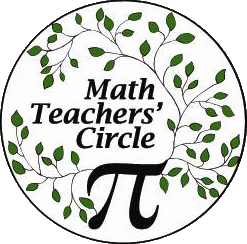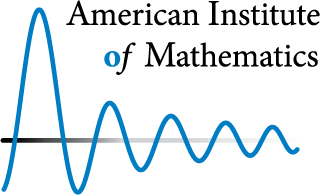Fast Facts
There are 125 MTCs in 39 states. We estimate that 2,100 teachers and 400 professors participate, with a potential impact on hundreds of thousands of students each year.
Math Teachers’ Circles are well aligned with the Common Core State Standards for Mathematical Practice and are among only a handful of professional development models recommended by the CBMS MET II report.
This 2015 article in Perspectives in Urban Education describes the benefits of MTC participation for teachers as practitioners of mathematics.
An article in the December 2014 Notices of the AMS describes MTCs for a mathematician audience.
A substantial benefit of [Math Teachers’ Circles] is that they address the isolation of both teachers and practicing mathematicians: they establish communities of mathematical practice in which teachers and mathematicians can learn about each others’ profession, culture, and work.
— Conference Board of the Mathematical Sciences Mathematical Education of Teachers II Report, 2012
Recent research on Math Teachers’ Circles provides evidence about how the program affects participating teachers:
- MTCs foster a professional learning environment where teacher voices and experiences are privileged (Brown, 2017).
- Teachers develop stronger identities as mathematical thinkers and begin to see themselves as both teachers and mathematicians (Hendrickson, 2016).
- Teachers feel more pedagogically prepared and have increased self-efficacy as math teachers. They use more inquiry-based teaching practices in their classrooms (Marle et al., 2012).
- Mathematical knowledge for teaching increases after participating in a Math Teachers’ Circle workshop (White et al., 2013).
- On national surveys with hundreds of respondents, teachers report increased enthusiasm for mathematics; higher levels of professional engagement and leadership; and an increased belief that all their students are capable of doing mathematics (cf. White & Donaldson, 2011).
Benefits for mathematics professors and departments are described in an article from the December 2014 Notices of the American Mathematical Society (Donaldson et al., 2014).
Several Math Teachers’ Circle sessions have also inspired mathematical research, including a publication in Mathematics Magazine by Gene Abrams and Jessica K. Sklar (Abrams & Sklar, 2010), and an article in the College Mathematics Journal co-authored by 13 members of the AIM Math Teachers’ Circle on Sets, Planets, and Comets (Baker et al., 2013).
Selected References
Abrams, G., & Sklar, J. K. (2010). The graph menagerie: Abstract algebra and the Mad Veterinarian. Mathematics Magazine, June 2010, 168-179.
Baker, M., Beltran, J., Buell, J., Conrey, B., Davis, T., Donaldson, B., Detorre-Ozeki, J., Dibble, L., Freeman, T., Hammie, R., Montgomery, J., Pickford, A., & Wong, J. (2013). Sets, planets, & comets. The College Mathematics Journal, 44(4), 258-264. Available online at http://www.maa.org/sites/default/files/pdf/pubs/SetsPlanetsAndComets.pdf
Brown, T (2017). Teachers’ voices are regularly absent from conversations about professional growth. White paper, 100Kin10.
Conference Board of the Mathematical Sciences (CBMS). (2012). The Mathematical Education of Teachers II. Providence RI and Washington DC: American Mathematical Society and Mathematical Association of America. Available on the CBMS website.
Donaldson, B., Nakamaye, M., Umland, K., & White, D. (2014). Math Teachers’ Circles: Partnerships between mathematicians and teachers. Notices of the American Mathematical Society, December 2014, 61(11), 1335-1341.
Fernandes, A., Koehler, J., & Reiter, H. (2011). Mathematics teachers circle around problem solving. Mathematics Teaching in the Middle School, 17(2), 108-115.
Hendrickson, K.A. (2016). (Doctoral dissertation). Math Teachers’ Circles: The effects of a professional development community on mathematics teachers’ identities. Retrieved from Ebscohost. (EACCD63BC675FBD1)
Marle, P. D., Decker, L. L., & Khaliqi, D. H. (2012). An inquiry into Math Teachers’ Circle: Findings from two year-long cohorts. Paper presented at the School Science and Mathematics Association Annual Convention, Birmingham, AL.
Morrison, C. (2011). Advice from the field of teacher networks: Informing a potential AP teacher network in Colorado. Unpublished master’s thesis, University of Colorado Denver.
Taton, J. A. (2015). Much more than it’s cooked up to be: Reflections on doing math and teachers’ professional learning. Perspectives on Urban Education, 12(1).
White, D. (2011). Math Teachers’ Circles – Impacting teachers’ Mathematical Knowledge for Teaching. Paper presented at the MAA Session on Fostering, Supporting, and Propagating Math Circles for Students and Teachers, I, Joint Mathematics Meetings, New Orleans, LA. Download slides
White, D., & Donaldson, B. (2011). How do Math Teachers’ Circles affect teachers? Themes from teacher surveys. Paper presented at the MAA Session on Fostering, Supporting, and Propagating Math Circles for Students and Teachers, I, Joint Mathematics Meetings, New Orleans, LA. Download slides
White, D., Donaldson, B., Hodge, A., & Ruff, A. (2013). Examining the effects of Math Teachers’ Circles on aspects of teachers’ mathematical knowledge for teaching. International Journal for Mathematics Teaching and Learning. Published online September 26, 2013, at http://www.cimt.org.uk

